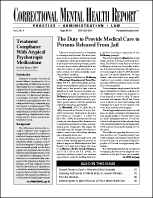Suicide Risk Assessment: What Is the “State of the Art”?
Author: James L. Knoll, IV, M.D..
Source: Volume 22, Number 01, May/June 2020 , pp.3-4(2)

< previous article |next article > |return to table of contents
Abstract:
The late Robert Simon, M.D. wrote a classic article titled “Suicide risk assessment: what is the standard of care?” almost 20 years ago. While a mountain of research has been generated since then, and some new interventions and treatments have shown promise, Simon’s recommendations still provide some of the best guidance. Failure to conduct an adequate suicide risk assessment is a common basis for suicide malpractice cases. Unfortunately, there is no litmus test for suicidality. Although substantial research efforts have been put into finding a clinical “instrument,” scale or tool, none of them have demonstrated enough reliability to be recommended for routine clinical use—indeed, improper use of these instruments can provide dangerous, false reassurance. The best method we have is the comprehensive, systematic suicide evaluation. This amounts to a very thorough face to face evaluation, review of records, obtaining collateral information from family/social contacts and then employing clinical judgment. There are no short-cuts, and special knowledge and skills are required—particularly to enhance the validity of the patient interview. Here is a brief, non-exhaustive list of the basic elements required for a systematic suicide risk assessment.Keywords: Suicide; Structured/Semi-Structured Checklists; Patient Self-Report Instruments; Collateral Information; Clinical Interview
Affiliations:
1: Contributing Editor.